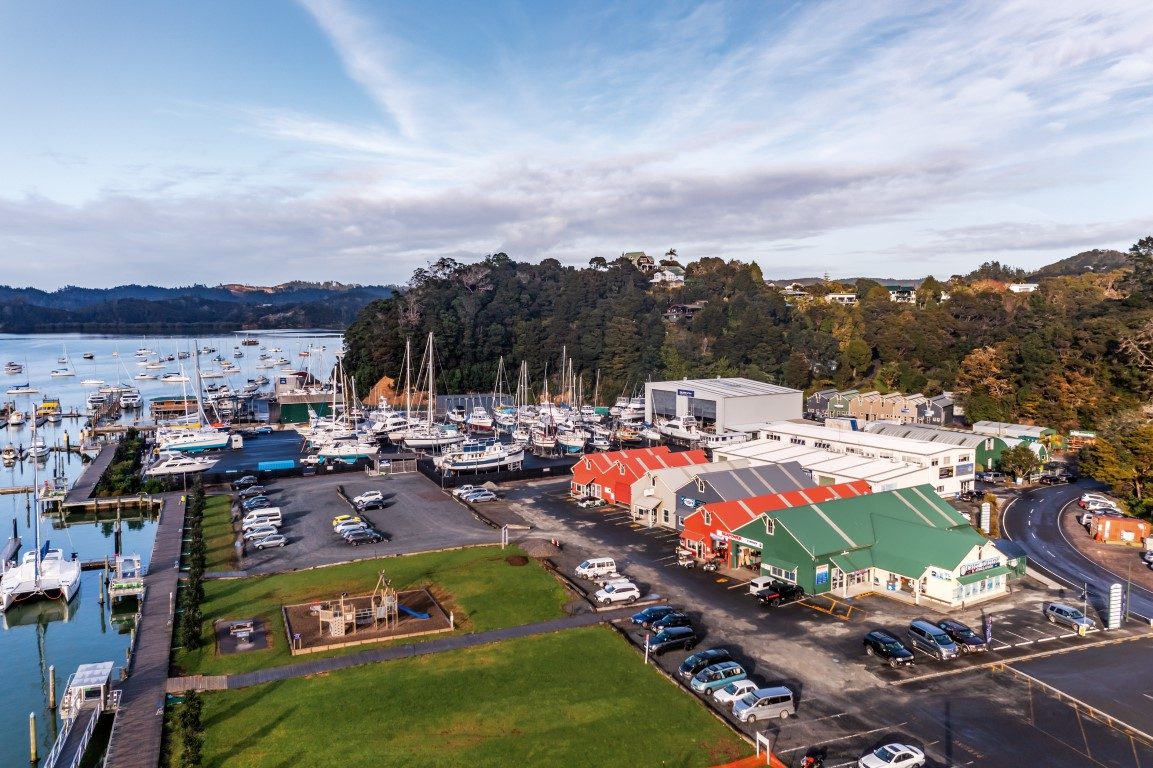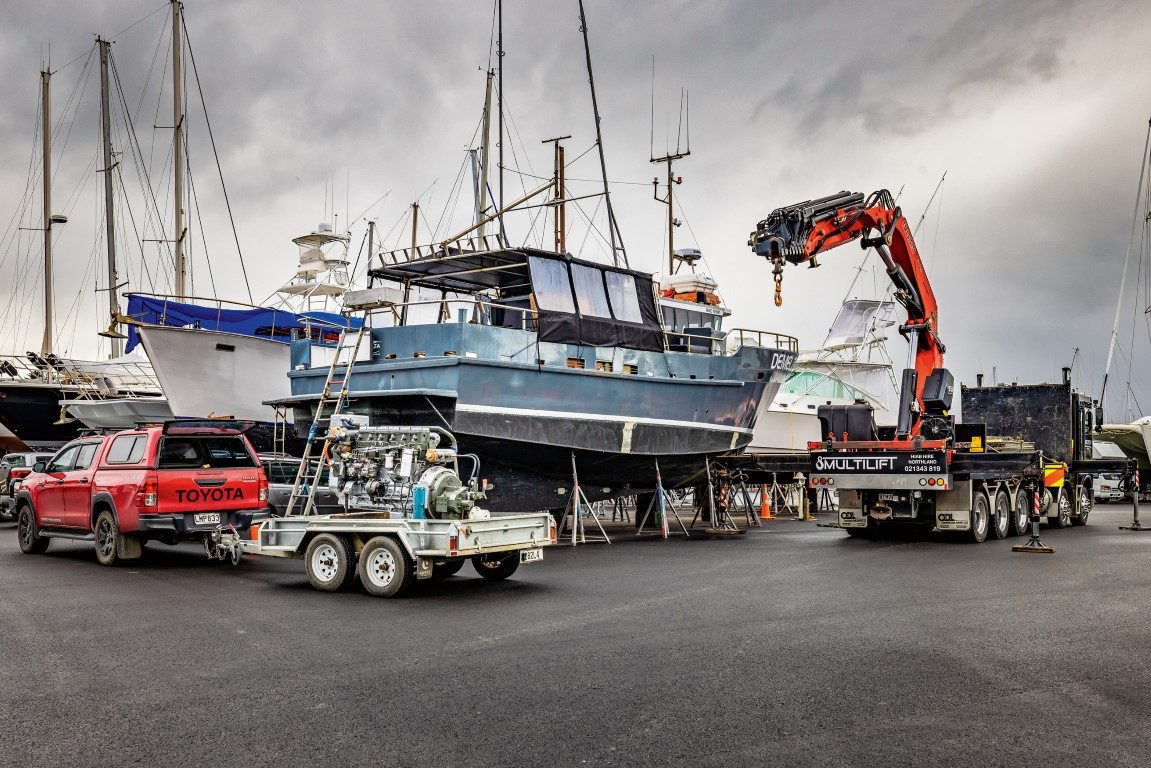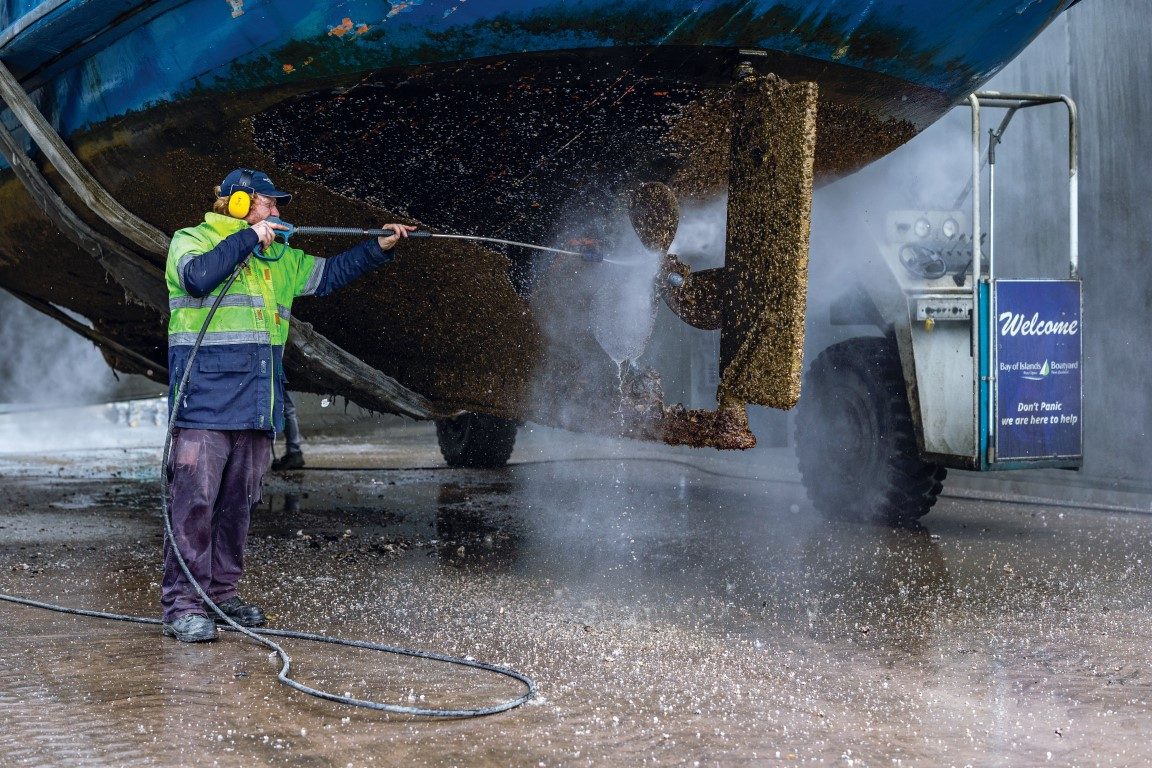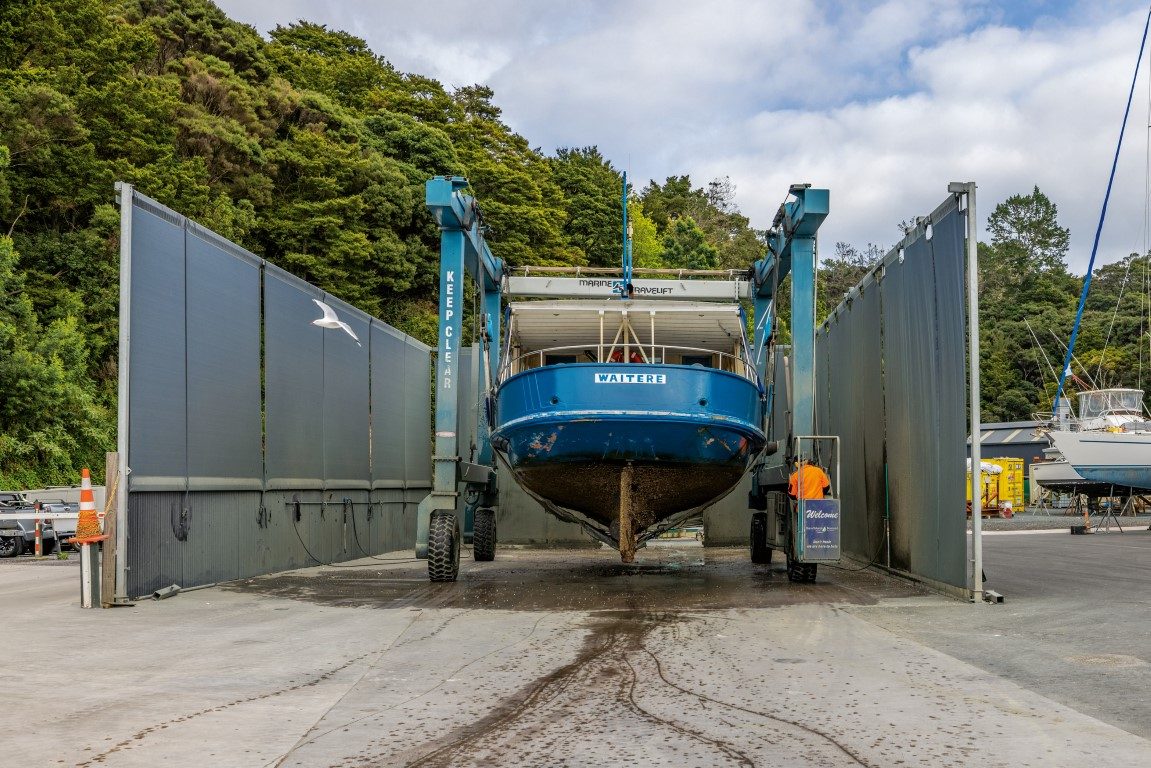

Bay of Islands Marina’s boatyard gets better every year – and the latest suite of improvements are ready ahead of a busy summer season.
Boatyards are critical marine infrastructure. They play a central role in our ability to maintain both recreational and commercial vessels. Well maintained boats are safer, they use fuel more efficiently, and they have less environmental impact too.

A significant upgrade of the boatyard at Bay of Islands Marina in Opua is helping make sure the region can provide the thousands of local and visiting vessels with the services they need.
“Customers visiting this summer will notice some big developments and improvements,” says boatyard manager Rhys Dempster.
Prior to the upgrade, the boatyard was already capable of lifting big boats of up to 60 tonne, including multihulls, offering the benefit of a full marine precinct with more than 40 different marine service specialists from sailmakers to painters to electricians and antifoul experts.
Bay of Islands Marina is a relatively modern marina that was only opened by Far North Holdings 22 years ago, but it is built around one of the oldest ports in New Zealand. In fact, its 216m wharf was constructed more than 130 years ago.
Over the years – and the decades – the operation has been improved and expanded. In 2017, a 180-berth extension was added to the marina, along with a 10,000m² land reclamation. Bay of Islands Marina now has in excess of 400 berths, plus swing moorings, a public boat ramp, a GOfuel facility, and is a Port of First Arrival for international vessels.

It is a high performing operation with an exceptional level of customer service: 2019 it was named ‘Marina of the Year’ by the New Zealand Marina Operators Association, and ‘International Marina of the Year’ by the Australian counterpart, the Marina Industries Association.
The latest improvements make it even better – not only for customers, but for the environment too.
The major focus, says boatyard manager Rhys Dempster, was to increase environmental protections within its boatyard operations. An impressive resumé of upgrades was completed: First of all the 8000m² boatyard has been fully reconstructed and resurfaced.
Many boat maintenance activities leave behind dust from sanding, old biofouling, old antifoul coatings, metal shavings, and other substances.

While there are systems and procedures in place to minimise this – for example, sanding is done by machine so that dust can be captured on the spot, Bay of Islands Marina has taken further steps to minimise the risk that any of these substances are released into the air or sea.
The boatyard now has a system to capture all rain water, which is filtered and treated before release to the sea.
To keep the surface clean, any hard waste that ends up on the ground (which is very little because it’s mostly captured by workers during the boat cleaning/maintenance process) is swept up by a ride-on vacuum system – with smaller hand held units to get into nooks and crannies.
Water from boat washes is captured, cleaned, and pumped into a storage tank and then re-used. This means that boat washing can continue even if the region is in drought, and that minimal fresh water enters the sea.

“This is a state-of-the-art system,” says boatyard manager Rhys Dempster. “It’s designed to ensure that we are only releasing clean rainwater into the sea. Anything we capture from a boat – whether that is biofouling, dust, or old antifoul, is collected and taken away for proper disposal.”
In addition, a new scaffold system has been introduced so that workers are on a safe, stable platform. A Roodberg slipway trailer which arrived at the marina last year gives more flexibility for catamarans and other ‘hard to lift’ boats, and a brand new Tallyhandler enables more versatility amongst the 70 spaces on the hardstand.
With the demand for boatyard services so high, Rhys does recommend that anyone needing maintenance done over summer books in the hardstand, and their contractors urgently.
“It’s busy and getting busier, and timing is crucial,” he says.





